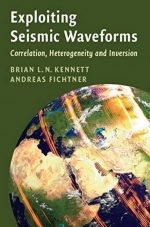Добрый день, Коллеги. Важное сообщение, просьба принять участие. Музей Ферсмана ищет помощь для реставрационных работ в помещении. Подробности по ссылке
Exploiting seismic waveforms. Correlations, heterogeneity and inversion / Использование сейсмических волн. Корреляции, неоднородность и инверсия
The early advances in understanding the internal structure of the Earth and the nature of earthquakes were achieved with a very limited number of seismic stations. Yet, by 1914, not only the presence of a core was recognised by Oldham (1906) from his analysis of the travel times of seismic waves from 14 earthquakes across the globe, but also a good estimate of its radius had been made (Gutenberg, 1913).Many advances came from painstaking analysis of large numbers of earthquake records at the same stations; such as the discovery of the presence of the inner core by Inge Lehmann from the records of the Copenhagen station (Lehmann, 1936) – fortunately the plentiful events on the Pacific Rim were at a suitable distance.
The basic theory of linear elastic waves was well established by the 1850’s, but seismograms did not conform to the expectations for simple models such as a uniform half space with simple P, S and Rayleigh waves (Lamb, 1904). Love (1911) introduced the possibility of dispersion for observed seismograms, though the details remained sketchy because the necessary calculations for multilayered structures were difficult even with early digital computers (e.g., Ewing, Jardetsky & Press, 1957). <...>




